
Sep 28, 2014 | Events, Innovation Workshop, Presentations, Resources
Among the world’s best in road infrastructure safety gathered recently at ARRB’s headquarters in Melbourne, Australia for iRAP’s third Innovation Workshop.
The Workshop was hosted by AusRAP leaders AAA, RACV and ARRB with support from TAC and VicRoads. The Innovation Workshop is a platform for those using iRAP tools and those involved in road infrastructure safety more broadly to transfer their know-how quickly to each other through mutual support and friendly competition.
A collection of 32 presentations from the workshop covers topics such as Star Ratings of roads before-and-after upgrades, targeted road maintenance to improve safety and mobile phone probe data for traffic speed measurements. Participants also had the opportunity to take a tour of recent safety improvements made to the Maroondah Highway.
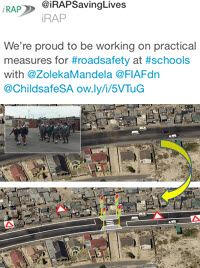
Aug 12, 2014 | News
Engineers from Cape Town City Council recently undertook training in the use of iRAP results and developed a series of concept plans to improve safety at key points around Sivile, Imbasa and A.C.J Phakade primary schools.
The work is part of a pioneering approach, introducing safe road infrastructure to protect school children, combined with road safety education and awareness for children and teachers from Takalani Sesame and Childsafe.
The initial iRAP assessment conducted with the City of Cape Town found that significant percentages of the roads around the schools are in the highest-risk 1- and 2-star categories for pedestrians.
The project is primarily funded with a donation from Decade of Action global corporate supporter Janssen, a Johnson & Johnson company. Additional financing and technical support for the project was provided by WorleyParsons, IVECO, and the FIA Foundation. The Medical Research Council is coordinating the monitoring and evaluation of the project.

Aug 12, 2014 | News
With the current Managing Director, John Dawson, retiring, EuroRAP is seeking to appoint a new CEO.
This is an outstanding opportunity to work with a talented team and road authorities, motoring clubs, political leaders and researchers to save lives during the Decade of Action for Road Safety.
EuroRAP was established as a sister program to EuroNCAP, and has members across 29 partner countries. EuroRAP’s members have assessed hundreds of thousands of kilometres of roads across Europe, and the program is growing in influence globally.
If you are interested in leading this award-winning international organisation in the challenge of making roads safe, I encourage you to submit your application.
Rob McInerney
CEO, iRAP

Aug 12, 2014 | News
Preliminary Star Ratings and safety investment options for 200km of roads in the Cayman Islands have been presented to key stakeholders.
At a meeting with the Minister for Infrastructure and Planning, the National Road Authority, the Royal Cayman Islands Police Service and the Caribbean Development Bank, options to lift road safety Star Ratings and prevent deaths and serious injuries were canvassed.
iRAP and the National Road Authority are finalise the assessment and ensure that recommendations are implemented.
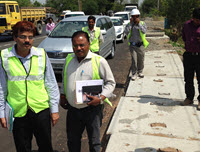
Aug 11, 2014 | News
World Bank-financed upgrades that will significantly improve road safety Star Ratings are now underway in the Indian States of Gujarat and Kerala.
Alongside more traditional measures, such as wider lanes and paved shoulders, the designs include sidewalks with safety fences, ‘raised’ pedestrian crossings, bus stops, solar powered street lights and traffic calming.
The designs also introduce “green tunnels” that preserve roadside trees – which are a safety hazard – by using safety barriers. Presentations about the upgrades are available for download.
At the same time, new road safety inspections of approximately 4,000km of roads are also now underway in Tamil Nadu and Uttar Pradesh.
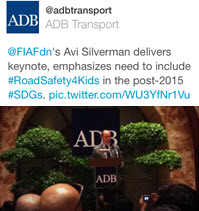
Aug 11, 2014 | News
More than 300 people from across the region gathered at ADB headquarters in the Philippines for Asia Pacific Road Safety 2014.
With a theme of “Improving Safety for Our Children”, the event comprised four parts: the GRSP Asia Seminar, iRAP Asia Pacific Workshop, ADB/ASEAN Train the Trainer Programme and GNCAP Workshop.
Participants in the iRAP Workshop had the opportunity to hear about road safety improvements that will lift Star Ratings in China, India and the Philippines. Presentations from the workshop are available for download.
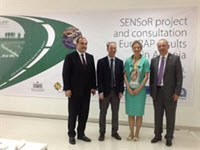
Aug 11, 2014 | News
Minister of Transport and Infrastructure Edmond Haxhinasto called for safe road infrastructure to be the new priority as he joined 30 professional and technical guests for consultation on the first EuroRAP results for Albania.
The Minister said Albania’s recent massive investment in new road infrastructure had led to safety problems which must be addressed before more new roads could be built. The SENSoR project has now Star Rated the first 500 km of Albania’s roads showing countermeasures which can target the safety problems and the huge economic benefits from investing in safety.
Presentations from Olivera Djordjevic (Make Roads Safe Hellas – SENSoR lead partner) and Dr Steve Lawson (Road Safety Foundation) were welcomed by the government and by Niko Leka, President of the Automobile Club of Albania, the project partner in Albania.

Aug 11, 2014 | News
Numerous training courses are now available for those who want to learn to Star Rate roads for safety and design safer roads.
With RAPcapacity online courses, you learn how to undertake iRAP-specification road assessments, at your own pace. Simply log-onto http://capacity.irap.org/training/rap-courses and select a course that suits you.
The week-long University of Birmingham (UK) iRAP course in Road Safety introduces the iRAP technology for evaluating the safety impact of road infrastructure first hand. Enrolments are now open for the September 2014 course.
iRAP partner, the IRF, has developed a series of Road Safety Seminars (Safer Roads by Design™) to provide road authorities with best practices and latest technologies that can be implemented to meet a country’s commitment to the Decade of Action. IRF regional conferences also offer opportunities for professional development.

Aug 11, 2014 | News
In cooperation with the Catalan Roads Agency, RACC has assessed 5,000 km of roads and produced a EUR 42.8 million investment plan that would save 1,400 fatalities and serious injuries over the next 20 years.
The main types of crashes that would be addressed are head-on crashes (which account for 30% of crashes) and junction crashes (20%).
The proposed countermeasures would complement work already being undertaken (see picture right) and include: median barriers on single-lane undivided roads, central hatching, intersection delineation and street lighting.
RACC and the Catalan Roads Agency (Direcció General d’infrastructures de transport terrestre) have agreed to continue working together to extend iRAP assessments to other networks, and to take the present recommendations into action through road maintenance contracts.
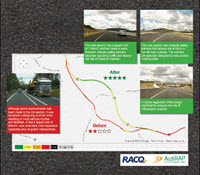
Aug 11, 2014 | News
An AusRAP assessment by RACQ shows that the improvements made to a 12km section of the Bruce Highway in Queensland, Australia have lifted it from just 2-stars to 4- and 5-stars for safety.
Previously, the section of road had a speed limit of 90km/h, was undivided and had hazardous roadsides and ‘at-grade’ intersections. The new section has two lanes in each direction which are separated by median safety barriers that reduce the risk of head-on crashes. Roadside safety barriers, which are specially designed to protect motorcyclists, help to reduce the risk of injury in run-off road crashes. A ‘grade-separated’ interchange significantly reduces the risk of intersection crashes.
As a result of the engineering improvements, the speed limit was able to be lifted to 110km/h yet the risk of death and serious injury has more than halved.
The improvements were an initiative of the Australian and Queensland Governments.
Jul 2, 2014 | News
EuroRAP is seeking to appoint a CEO
The current CEO, the Managing Director of the Association, is retiring. You will lead the European Road Assessment Association’s activities and enable your Members to deliver RAP programmes. You will conceive or develop practical programmes of research, implementation, legislation or communications that will lead to safer roads.
In addition to a core grant from the FIA Foundation and membership fees, you must raise funds from a wide variety of sources to help enable the Association’s and your Members’ programmes.
You will work closely with other partners and RAP programmes worldwide including iRAP, a charity established by EuroRAP to act as a global umbrella for road assessment and develop key software tools for global use.
You will be responsible for a team of UK based staff who are jointly employed by EuroRAP and iRAP so they can move easily between the work of European and global programmes. You will be responsible for overseeing iRAP’s programmes in the Middle East and Africa as and when may be agreed between iRAP and EuroRAP.
For more information on this role and to apply please click here.
Closing date 7th September 2014.
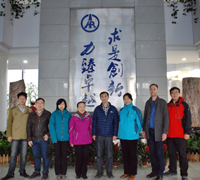
Jun 25, 2014 | News
The Research Institute of Highway (RIOH), Ministry of Transport, China, has received the iRAP Asia Pacific Star Performer award for their leadership of ChinaRAP.
The China Road Assessment Program (ChinaRAP), which Star Rates roads for crash risk and develops safety countermeasure plans, is now being used in 14 city and highway projects across China, helping to shape development bank projects worth more than CNY 9 billion (USD 1.5 billion).
A few examples of ChinaRAP projects are:
- In Yunnan, the team assessed city roads and made recommendations for safety improvements, such as footpaths, speed limit reclassification and bicycle lanes, in the World Bank financed Yunnan Honghe Prefecture Urban Transport Project.
- In Shaanxi, the team is working closely with designers to lift safety star ratings on almost 1,000km of roads as part of the Asian Development Bank financed Shaanxi Mountains Road Safety Demonstration Project.
- In Anhui, the team worked closely with designers of the G316 to lift star ratings of a new class 1 road. These upgrades are funded by the Wuhu Local Government.

Jun 4, 2014 | News
The last rites are being held today for Gopinath Munde, India’s Rural Development Minister who was tragically killed this week in a car crash. Although a very high profile case which has seen much coverage in the Indian press and further afield, he is by no means the only road victim this week in a country struggling to cope with the burden of road crashes. With around 380 reported road deaths each and every day on India’s roads the country is at crisis point and figures show that many of the victims will be the from lower-income rural families, the lives of whom Mr Munde worked so hard to improve, that are the hardest hit.
Fortunately there are positive efforts being made, among them the work being led by Public Works Departments and the World Bank in States such as Kerala, Gujarat, Assam and Karnataka. In major road upgrade projects, ambitious targets to lift road safety star ratings have been set. It’s the first time that this approach, which is lifting designs above basic standards, has been adopted in a developing country on a large scale. Importantly, the targets are aimed at making roads safer for everyone: vehicle occupants, motorcyclists, pedestrians and bicyclists.
The road safety challenge in India is large; but many of the solutions are already well known. Building features such as footpaths, safe crossings, safety barriers and roundabouts around the country will save lives. The death of Gopinath Munde is truly upsetting; we must ensure that thousands more deaths like his are avoided.
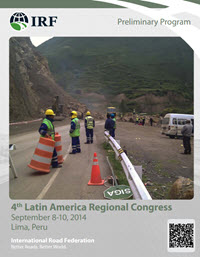
May 29, 2014 | News
The International Road Federation (IRF) will hold a series of regional congresses, in Africa, Latin America and Asia this year.
Attendees at the conferences will have the opportunity to dialogue with government officials, developmental partners, contractors, consultants and other stakeholders who share a common interest in improving people’s lives through a sound, resilient and safe transportation system
To support road policy development and analysis, the IRF World Road Statistics is also available. To mark the 50th anniversary of the publication, includes 12 years of updated data, providing a comprehensive statistical picture of international road and inland transport from the start of the millennium.

May 29, 2014 | News
Facilitated by the Japan Automobile federation (JAF) and with technical support from iRAP, the National Institute for Land and Infrastructure Management (NILIM) has carried out a pilot assessment of risk on roads in Japan.
Apart from helping to build an understanding of the iRAP methodology among local partners, the project also offers the opportunity for iRAP to learn about successful safety management techniques in Japan.
Between 2001 and 2010, Japan managed to more than halve its road death rate, cutting the rate from 10 deaths per 100,000 population to 4.5 deaths per 100,000 population.
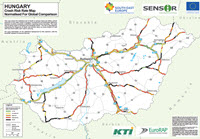
May 28, 2014 | News
During the 12th Annual EuroRAP General Assembly, the Institute for Transport Sciences (KTI) published Risk Maps for some 3,000km of roads in Hungary.
The roads represent just 11% of the investigated part of the national road network, but carry 54% of traffic flow. Some 34% of fatal crashes occur on the roads.
The Risk Map, produced as part of SENSOR, shows that the network spans the full range of risk categories, from high risk through to low risk.
Based on the findings of the review carried out with EuroRAP methodology, a Hungarian expert group is to make proposals on low-budget safety improvements.
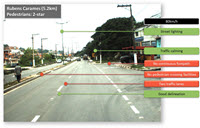
May 28, 2014 | News
In the first application of iRAP in Brazil, crash risk on 4,250km of roads in São Paulo state was assessed.
The results, which are helping to guide the $429 million São Paulo Sustainable Transport Project, were presented as part of a training course for around 150 people.
Much of the network was rated in the highest risk 1- and 2-star categories. About two thirds (62%) of roads where pedestrians are present carry traffic 40km/h or more have no footpaths. Almost half (40%) have hazardous objects within 5 metres of the edge and limited roadside protection (such as safety barriers).
The most comprehensive plan shows that an investment of R$2.55 billion (US$1.28 billion) could reduce the number of deaths and serious injuries by 41%, preventing almost 80,000 deaths and serious injuries over 20 years.
Following the presentation of results, iRAP’s São Paulo based consultant conducted a series of workshops to train 15 engineers and planners from the São Paulo Department of Highways (DER-SP) in the use of the iRAP methodology and software.
The iRAP assessments in Brazil are supported by the World Bank GRSF and Bloomberg Philanthropies.

May 27, 2014 | News
Vehicle and road infrastructure experts recently explored how technologies from their fields will ‘work together’ to prevent common types of vehicle and motorcycle crashes and those involving pedestrians and bicyclists.
Participants in the workshop, which was hosted by RACV in Melbourne, Australia, also considered the challenge of preventing crashes involving the rapidly growing ‘e-bike’ fleet in many parts of the world.
Although advanced V2V and V2I technology which may lead to ‘self-driving’ cars was cited as having enormous potential, there was also a focus was on the safety gains of rapid, wide-scale deployment of already-proven technology and techniques, especially in rapidly developing countries.
Examples considered include: emergency brake assist which helps drivers to quickly slow their car, flexible safety barriers that are highly-effective at dissipating energy and innovative forms of head-protection for bicyclists.
The workshop was developed by iRAP and GNCAP, and built on the Roads That Cars Can Read Initiative. ARRB Group is currently producing a Research Report that will document proceedings.

May 26, 2014 | News
Standard iRAP technical specifications, guides and manuals, which can be used in procurement and management of iRAP-specification activities, are available online.
The documents include a standard Terms of Reference (TOR) that can be downloaded and edited to form the basis of a project plan and/or used in the process of engaging consultants to deliver services.
The documents also include specifications on road inspections, Star Rating and Safer Roads Investment Plan analyses and Risk Map analyses using crash data.
The specifications are accompanied by a growing list of consultants and firms capable of bidding for and delivering iRAP-specification projects. The specifications also enable consultants and firms that have not previously undertaken iRAP-specific activities to gain ‘accreditation’ during project delivery.

May 23, 2014 | News
The granddaughter of Nelson Mandela and global road safety campaigner, Zoleka Mandela led the launch of the first Safe Schools project in South Africa.
The project is a pioneering approach, introducing safe road infrastructure to protect school children, combined with road safety education and awareness for children and teachers from Takalani Sesame and Childsafe.
The initial iRAP assessment conducted with the City of Cape Town found that 77% of the roads around Sivile Primary School are in the highest-risk 1- and 2-star categories for pedestrians.
The project is primarily funded with a donation from Decade of Action global corporate supporter Janssen, a Johnson & Johnson company. Additional financing and technical support for the project was provided by WorleyParsons, IVECO, and the FIA Foundation. The Medical Research Council is coordinating the monitoring and evaluation of the project.
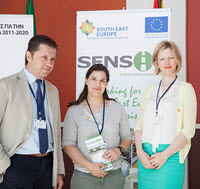
May 9, 2014 | News
The European Commission, in cooperation with the Greek EU Presidency, hosted European Road Safety Day in Athens on 9 May 2014.
Vice-President Siim Kallas, Commissioner for transport, said: “The EU has an outstanding road safety record in global comparison. But as long as there are fatal accidents on our roads, we cannot afford to be complacent. This year, it is time to look at the roads and the infrastructure. There is great potential in making EU roads both safer and smarter.”
Make Roads Safe Hellas participated in the event, illustrating recent progress made on SENSOR, which brings together 14 countries to assess roads and identify life-saving engineering improvements.
SENSOR builds on an EU success story, the adoption of basic safety principles for management of the trans-European road transport network: safety inspections, mapping of the most dangerous road stretches and safety impact assessments before the building of new roads.
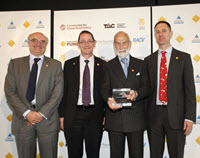
May 6, 2014 | News
The Prince Michael Award recognises iRAP’s efforts to scale-up action on road infrastructure safety and tackle the global epidemic of road traffic injuries.
More than 70 countries have made use of iRAP tools to assess their roads and in developing countries alone, the tools are being used in projects worth more than $7 billion.
The award was presented during the Decade of Action Policy and Donor Forum in Melbourne, Australia. During the Forum Global Road Safety Ambassador, Michelle Yeoh, appealed for the inclusion of road safety in new global development goals, encouraging everyone to vote for ‘better roads and transport’ in the UN’s global My World survey.
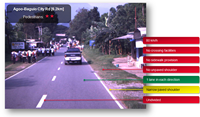
Feb 28, 2014 | News
A trip to the beautiful ‘City of Pines’ is about to become safer thanks to road safety improvements being planned by DPWH.
The road that climbs up to the mountain-top city is among the nation’s most scenic, yet it is also the scene of numerous serious road crashes. In July 2010 for example, police reported that at least 12 people died and 39 others were hurt after the bus they were travelling in slammed into a tree on a curve.
Planned improvements include school speed zones, paved shoulders, safety barriers, footpaths, pedestrian crossings and new linemarking and signs.
The demonstration project is a tangible outcome of iRAP assessments that were undertaken with support from the World Bank and Australian Aid.
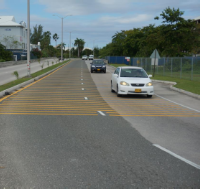
Feb 28, 2014 | News
The National Roads Authority of the Cayman Islands has begun a program of iRAP assessments that will lead to road safety improvements.
The NRA plan sets out details for assessments of existing roads, assessments of designs for a planned airport connector road, implementation of road safety countermeasures, training, policy development and advocacy.
Speaking at an official launch of the initiative, the minister responsible for roads, Kurt Tibbetts, said that the assessments were needed out of concern for fatal crashes that have occurred. In 2011, the Cayman Islands had a road death rate of 16.5 deaths per 100,000 people, almost twice the average of high-income countries.

Feb 28, 2014 | News
New iRAP assessments are due to begin shortly in the Indian State of Uttar Pradesh, linked with the World Bank-financed road upgrades.
Uttar Pradesh is home to the famed Taj Mahal, but among the States of India Uttar Pradesh also suffers the second highest level of road trauma, with a reported 16,149 deaths occurring in 2012.
The assessments of some 2,000km of roads will build on the extensive work already undertaken in India, which includes assessments of 6,200km of existing roads and 1,800km of designs for major road upgrades.
iRAP’s participation in the project is supported by the GRSF and Bloomberg Philanthropies.








































